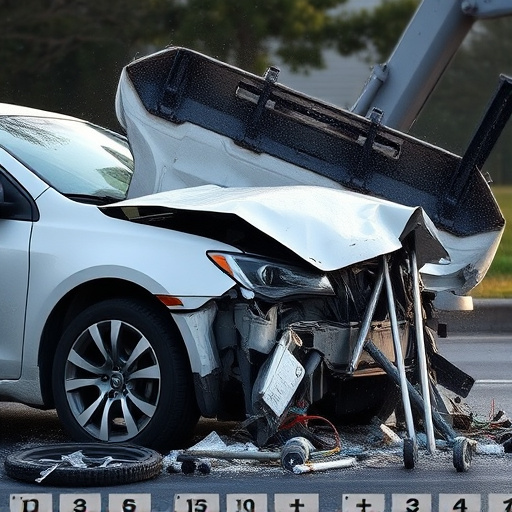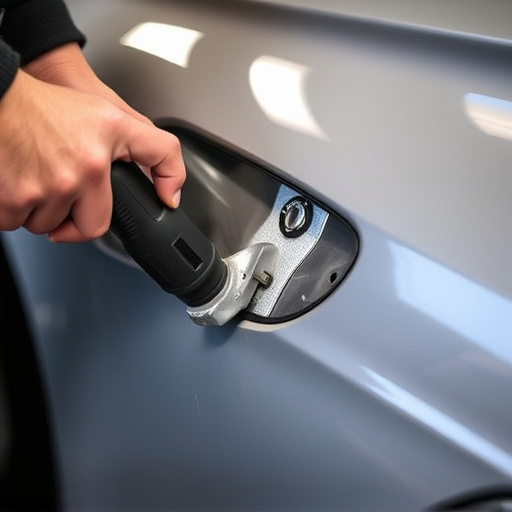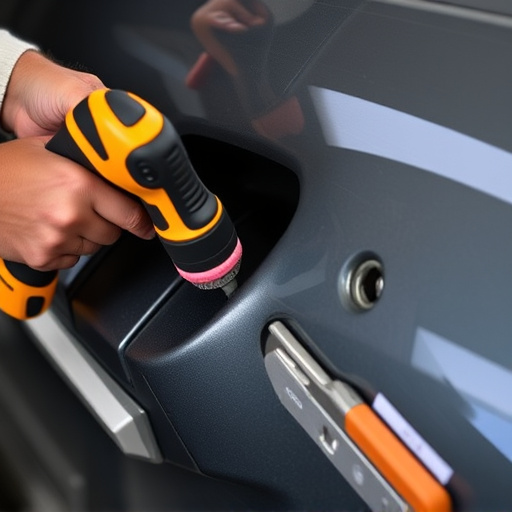Tesla repair documentation is crucial for automotive shops, involving meticulous record-keeping of damage assessments, proposed repairs, parts used, labor costs, and completion times. Comprehensive logs ensure customer satisfaction, align with Tesla brand standards, and facilitate after-sales support. Best practices include detailed customer interactions, technical repairs, part replacements, tire services, battery health assessments, and body repair work, enabling trend analysis and consistent high-quality care for electric vehicle owners. Digital record-keeping systems streamline management and improve accuracy.
Tesla vehicles are renowned for their cutting-edge technology and innovative design. However, proper maintenance and repairs are essential to ensure optimal performance. This article delves into the critical aspect of Tesla repair documentation that service shops should adhere to. By understanding the requirements and implementing best practices, shops can provide transparent and high-quality service, ensuring customer satisfaction and peace of mind. We’ll explore the essential elements of effective Tesla service records and offer guidelines for maintaining comprehensive repair logs.
- Understanding Tesla Repair Documentation Requirements
- Essential Elements of Effective Tesla Service Records
- Best Practices for Maintaining Comprehensive Tesla Repair Logs
Understanding Tesla Repair Documentation Requirements

Tesla repair documentation is a crucial aspect that automotive repair shops must get right. In the world of Tesla vehicles, understanding and adhering to specific documentation requirements is essential for ensuring smooth repairs and maintaining customer satisfaction. Every time a car, whether it’s a Tesla or a traditional automobile, undergoes any form of damage, from minor fender benders to major collisions, proper documentation becomes paramount.
Shops dealing with Tesla repair should be well-versed in the brand’s guidelines and industry standards for automotive repair. This includes meticulous record-keeping, detailed work orders, clear communication with customers about costs and repairs, and providing comprehensive after-sales support. The process involves creating accurate and thorough documents that outline the extent of damage, proposed repair methods, parts required (including any replacement or aftermarket options), labor costs, and estimated completion times. Such documentation not only helps Tesla owners navigate the repair process transparently but also facilitates effective collision repair, ensuring vehicles are restored to their pre-accident condition.
Essential Elements of Effective Tesla Service Records

Effective Tesla repair documentation is a cornerstone of quality service for any shop specializing in these electric vehicles. It goes beyond simple record-keeping; it’s a critical tool for ensuring customer satisfaction, maintaining brand standards, and facilitating efficient after-sales support. The most robust service records capture not only the technical aspects of repairs but also detail the entire customer interaction, including initial consultations, diagnostic procedures, recommended services, and final outcomes.
Key elements include clear documentation of vehicle history, meticulous logging of all maintenance and repair activities, detailed descriptions of parts replaced (with part numbers), and comprehensive notes on tire services, battery health assessments, and any vehicle body repair or collision repair work performed. Such records not only help Tesla owners track their vehicle’s service history but also empower shops to identify trends, optimize workflows, and deliver consistently high-quality care.
Best Practices for Maintaining Comprehensive Tesla Repair Logs

Maintaining comprehensive Tesla repair logs is paramount for any automotive shop catering to these electric vehicles. Best practices include meticulous documentation at every step of the repair process, from initial assessment to final quality control. Each entry should detail the issue, diagnostic methods used, parts replaced, and labor hours spent, ensuring a clear trail of transparency for both the shop and the vehicle owner.
Further, integrating digital record-keeping systems streamlines log management, enhances accuracy, and facilitates efficient retrieval. This is particularly crucial in fleet repair services where quick access to detailed records, including past bumper repairs or other common issues, can significantly optimize maintenance routines and reduce downtime for commercial vehicles.
Tesla repair documentation is not just a legal requirement; it’s an essential tool for maintaining customer satisfaction and ensuring high-quality service. By implementing best practices outlined in this article, shops can create comprehensive records that enhance transparency, facilitate effective communication, and ultimately contribute to the continued success of Tesla ownership. Remember, proper Tesla repair documentation is key to building trust with clients and fostering a positive reputation in the automotive industry.













